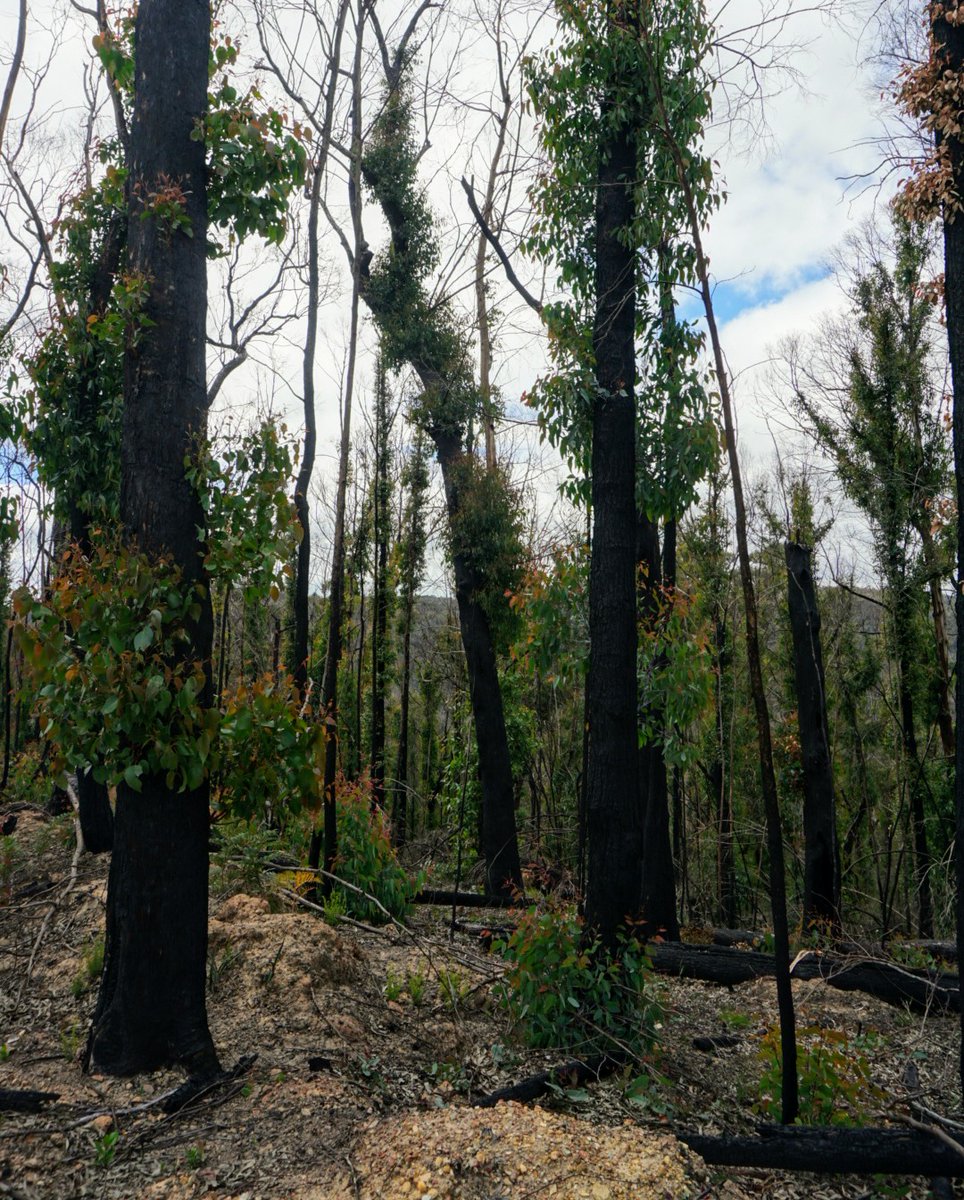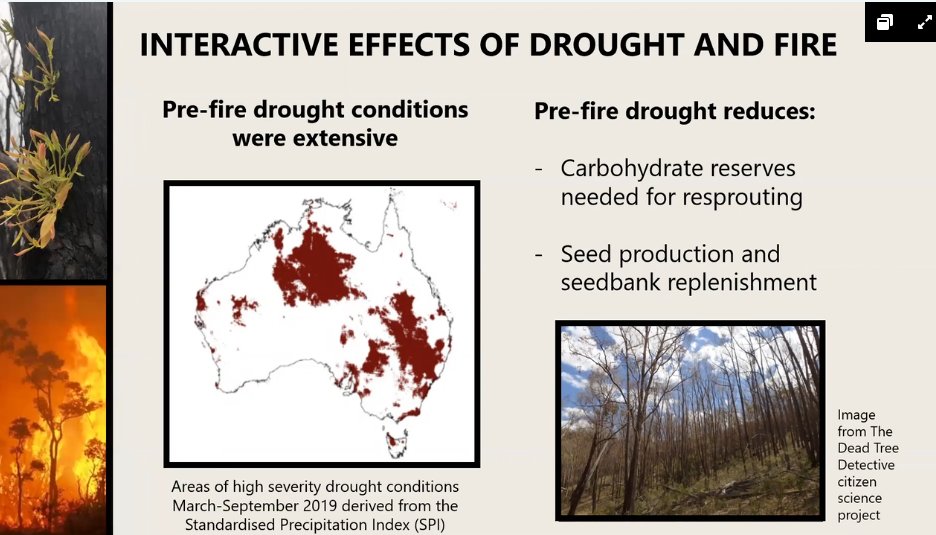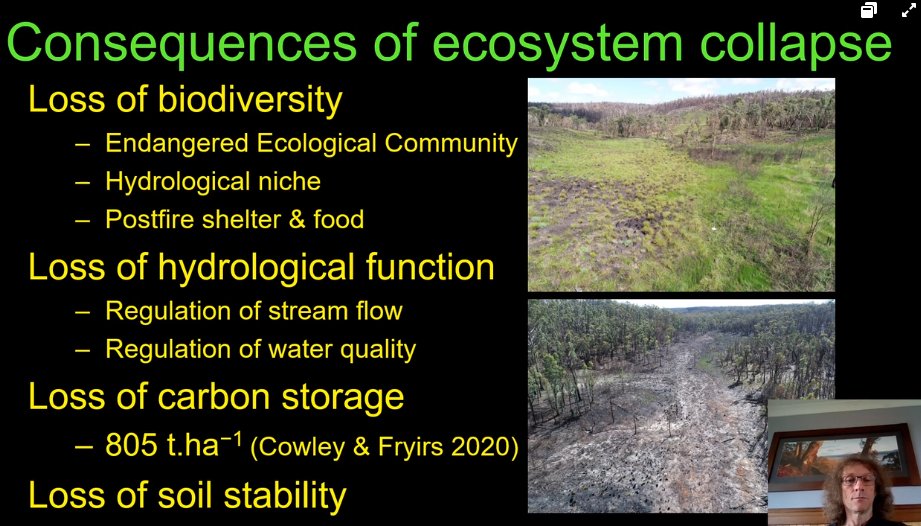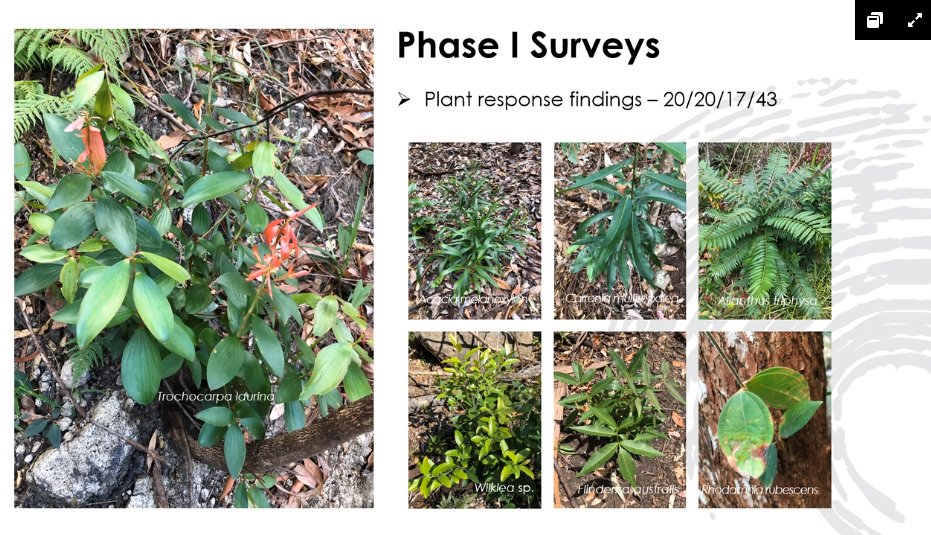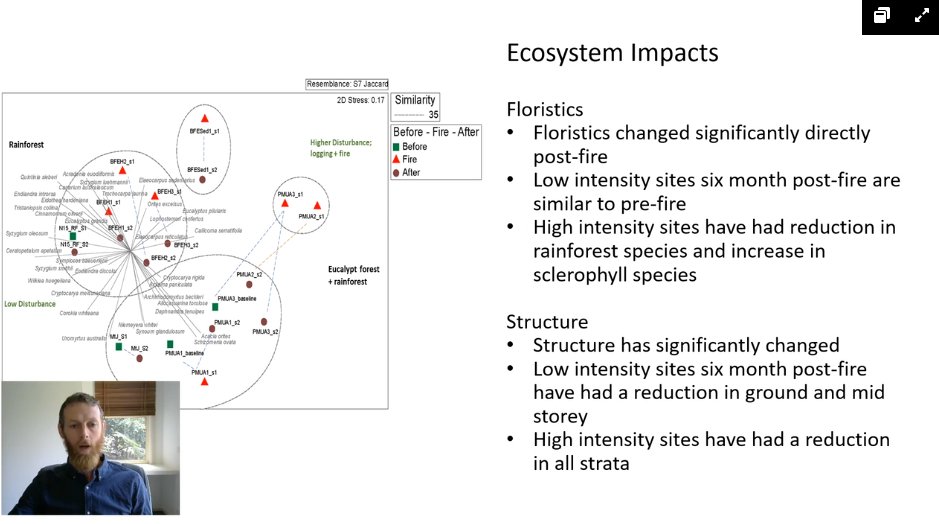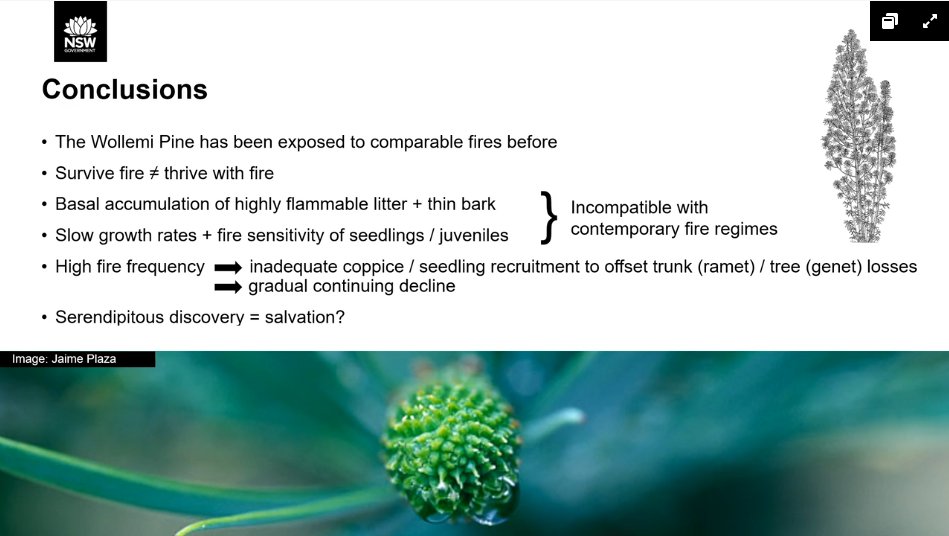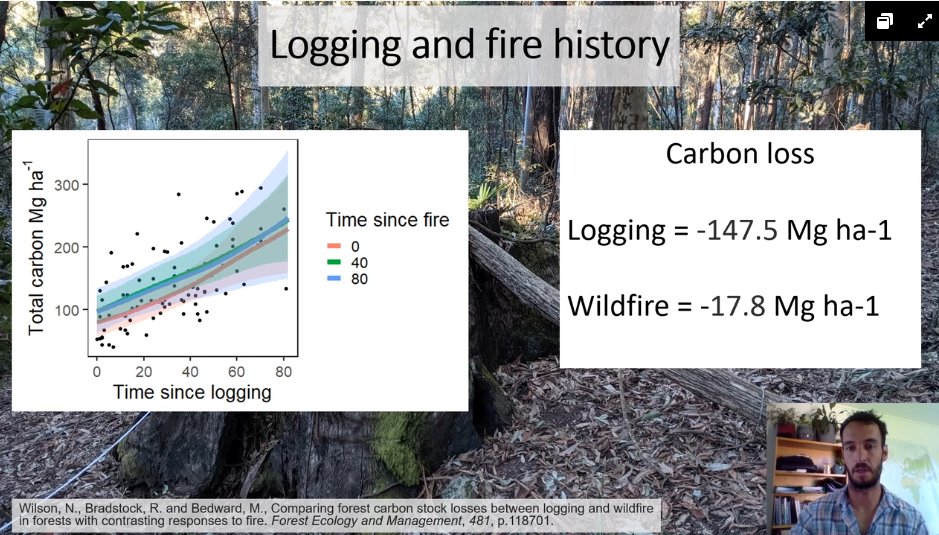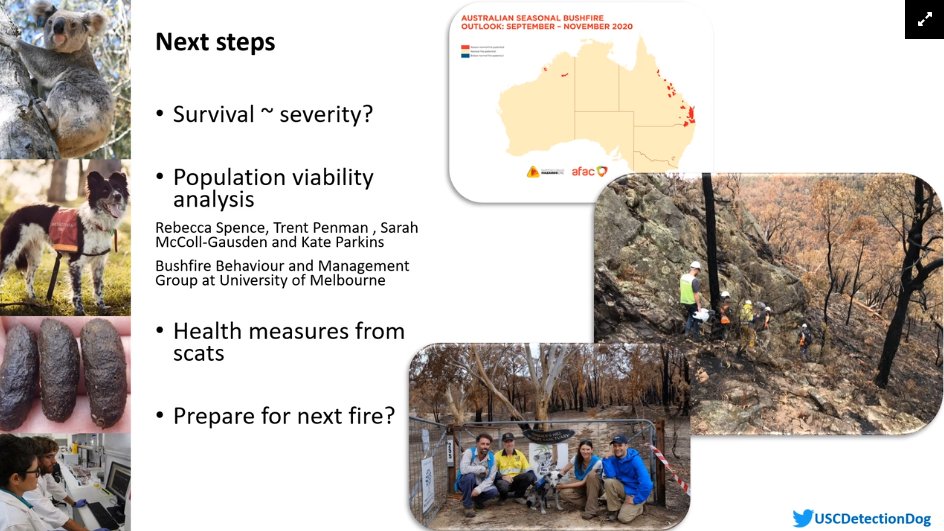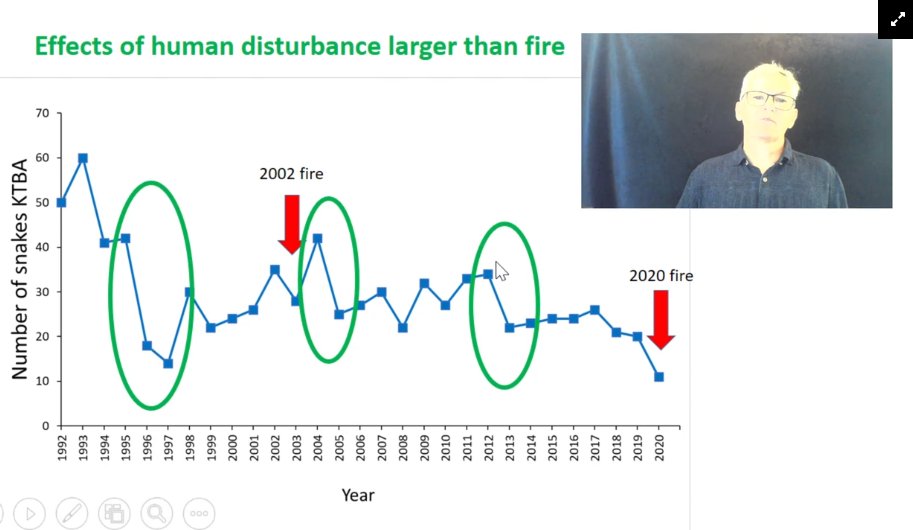Today at #ESAus20 we will hear about early impacts of the Black Summer fires
I'll tweet the talks in a thread below #fireecology
#fireecology
I'll tweet the talks in a thread below
 #fireecology
#fireecology
Rachael Gallagher found 67% of Australia's 26,000 plant species experienced fire in 2019-2020 season; 20 spp had their entire range burnt
She has prioritised 486 spp for management incl cascading effects of co-occurring hazards
see https://www.environment.gov.au/biodiversity/bushfire-recovery/priority-plants
#fireecology #ESAus20
She has prioritised 486 spp for management incl cascading effects of co-occurring hazards
see https://www.environment.gov.au/biodiversity/bushfire-recovery/priority-plants
#fireecology #ESAus20
David Keith reports ecosystem COLLAPSE of peatland ecosystems in swamps subjected to long-wall mining. Unmined swamps are resilient to fire effects
This highlights that we must manage our ecological threats to mitigate the impact of co-occurring threats
#fireecology #ESAus20
This highlights that we must manage our ecological threats to mitigate the impact of co-occurring threats
#fireecology #ESAus20
Paul Donatiu @QldFBC spoke about the 2019-20 fire season the in Border Ranges
Preliminary surveys looked at post-fire regeneration of rainforest plants (they don't burn very often)
+new record of the endangered Pink Underwing Moth: first for Lamington NP
#fireecology #ESAus20
Preliminary surveys looked at post-fire regeneration of rainforest plants (they don't burn very often)
+new record of the endangered Pink Underwing Moth: first for Lamington NP
#fireecology #ESAus20
Justin Mallee reports on Nightcap Range
Significant structural changes in rainforest sites that were burnt: from floristically diverse understorey to more simple, but scope for regen
Detailed fire impacts & monitoring for Nightcap Oak and Peach myrtle
#fireecology #ESAus2020
Significant structural changes in rainforest sites that were burnt: from floristically diverse understorey to more simple, but scope for regen
Detailed fire impacts & monitoring for Nightcap Oak and Peach myrtle
#fireecology #ESAus2020
Berin MacKenzie reports on Wollemi Pines
- they shed entire branches (not leaves)
- basal charring 1-2m (+ significant wounds)
- taller trees >10m survive as they have some unscorched canopy
- prolific basal coppicing + seedlings!
#fireecology #ESAus20
- they shed entire branches (not leaves)
- basal charring 1-2m (+ significant wounds)
- taller trees >10m survive as they have some unscorched canopy
- prolific basal coppicing + seedlings!
#fireecology #ESAus20
Nicholas Wilson used bayesian regression models to measure carbon stock losses from the Currowan fire, NSW south coast
Previously logged sites lost more carbon that unlogged sites due to removal of coarse woody debris
see paper https://doi.org/10.1016/j.foreco.2020.118701
#fireecology #ESAus20
Previously logged sites lost more carbon that unlogged sites due to removal of coarse woody debris
see paper https://doi.org/10.1016/j.foreco.2020.118701
#fireecology #ESAus20
Romane Cristescu is using @USCDetectionDog and thermal imagery UAVs to detect koalas in areas of SEQ & NENSW impacted by 2019-20 fires
She's looking at effects of fire severity, population viability analyses and measuring koala health through their scats
#fireecology #ESAus20
She's looking at effects of fire severity, population viability analyses and measuring koala health through their scats
#fireecology #ESAus20
Katarina Mikac's quoll work in Monga NP turned into a fire project thanks to the 2019-20 Currowan fire
They'll soon have enough data to answer some useful questions (e.g. recovery, activity patterns and diet analysis)
#fireecology #ESAus20
They'll soon have enough data to answer some useful questions (e.g. recovery, activity patterns and diet analysis)
#fireecology #ESAus20
The endangered broad headed snake shelters underground during heatwaves which is a useful fire survival strategy
Jonothan Webb highlights that humans moving rocks are still their biggest threat (rock removal circled in green)
#fireecology #ESAus20
Jonothan Webb highlights that humans moving rocks are still their biggest threat (rock removal circled in green)
#fireecology #ESAus20
Some key #ESAus20 #fireecology points:
Fire impacts are strongly affected by co-occurring ecological presssures; we need to manage them simultaneously
Our biota show resilience to fire, but are susceptible to frequent, high severity fire. As always fire regime context is key
Fire impacts are strongly affected by co-occurring ecological presssures; we need to manage them simultaneously
Our biota show resilience to fire, but are susceptible to frequent, high severity fire. As always fire regime context is key

 Read on Twitter
Read on Twitter